Australian broomrape
Display all 13 images
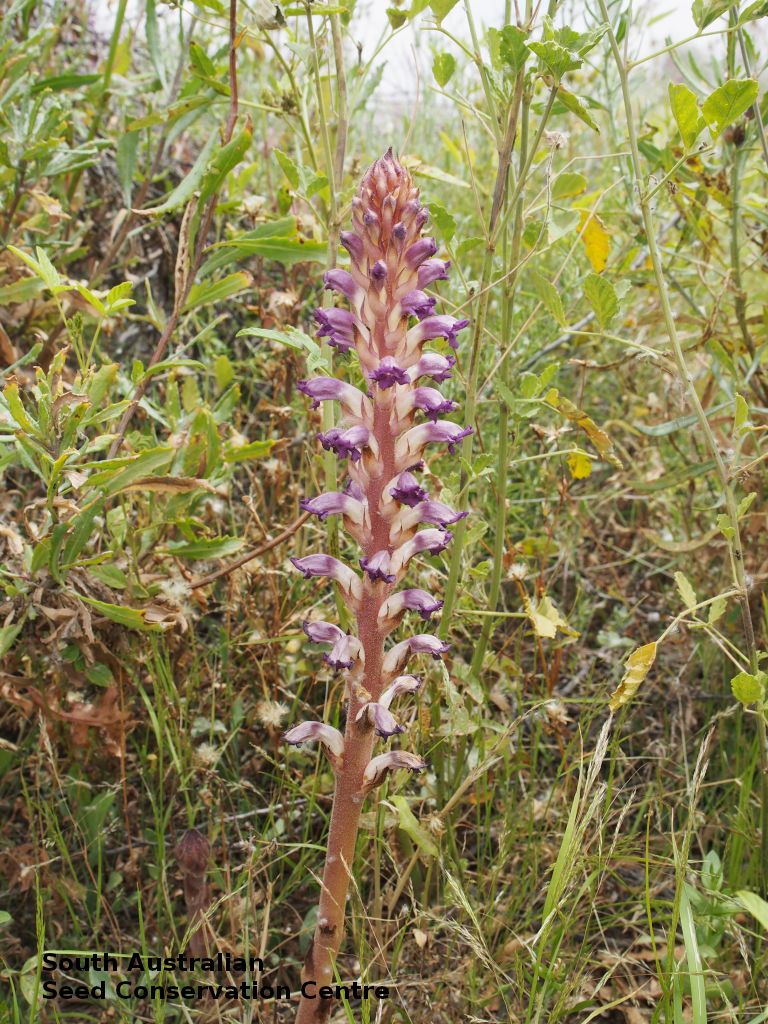
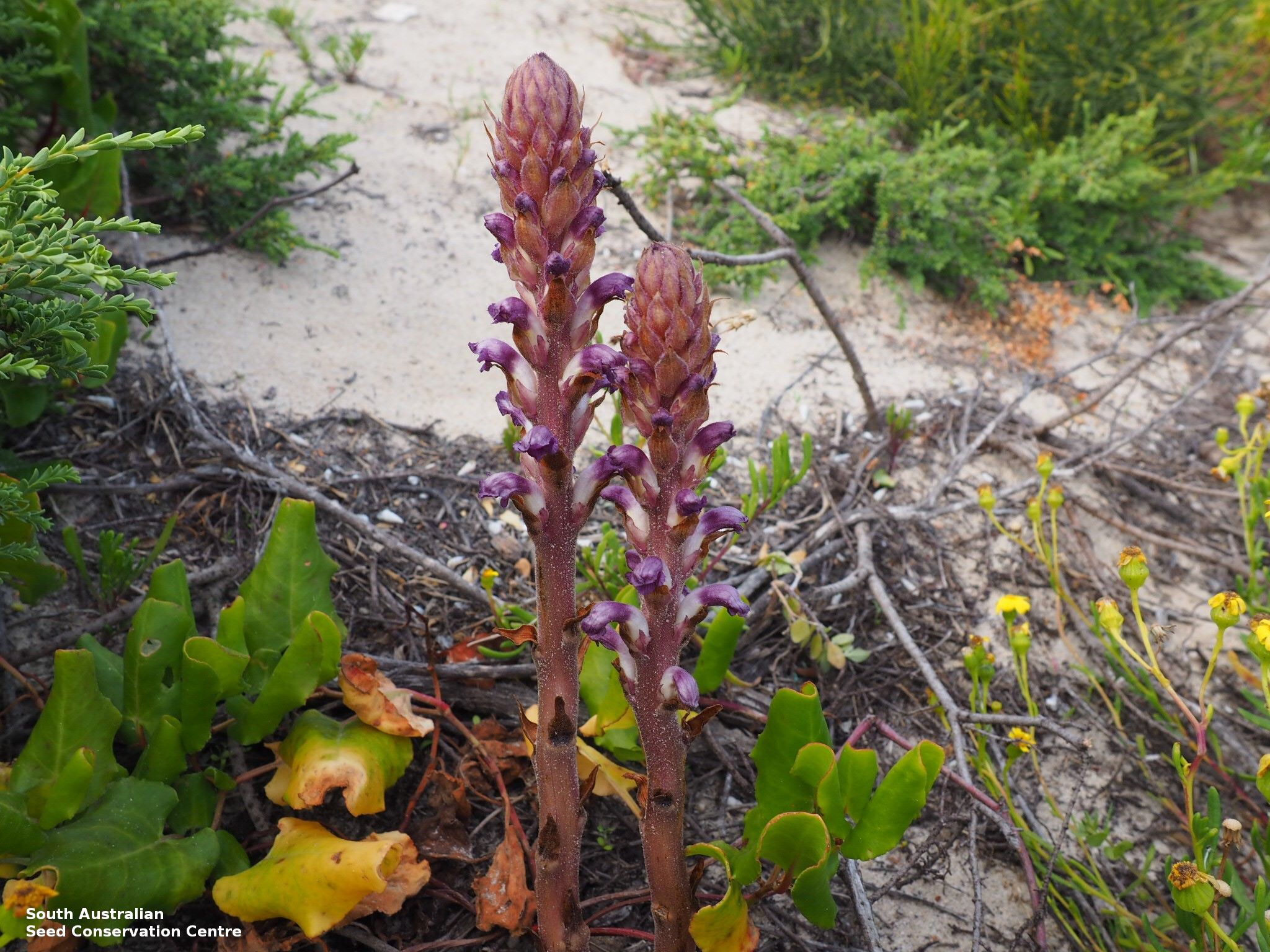
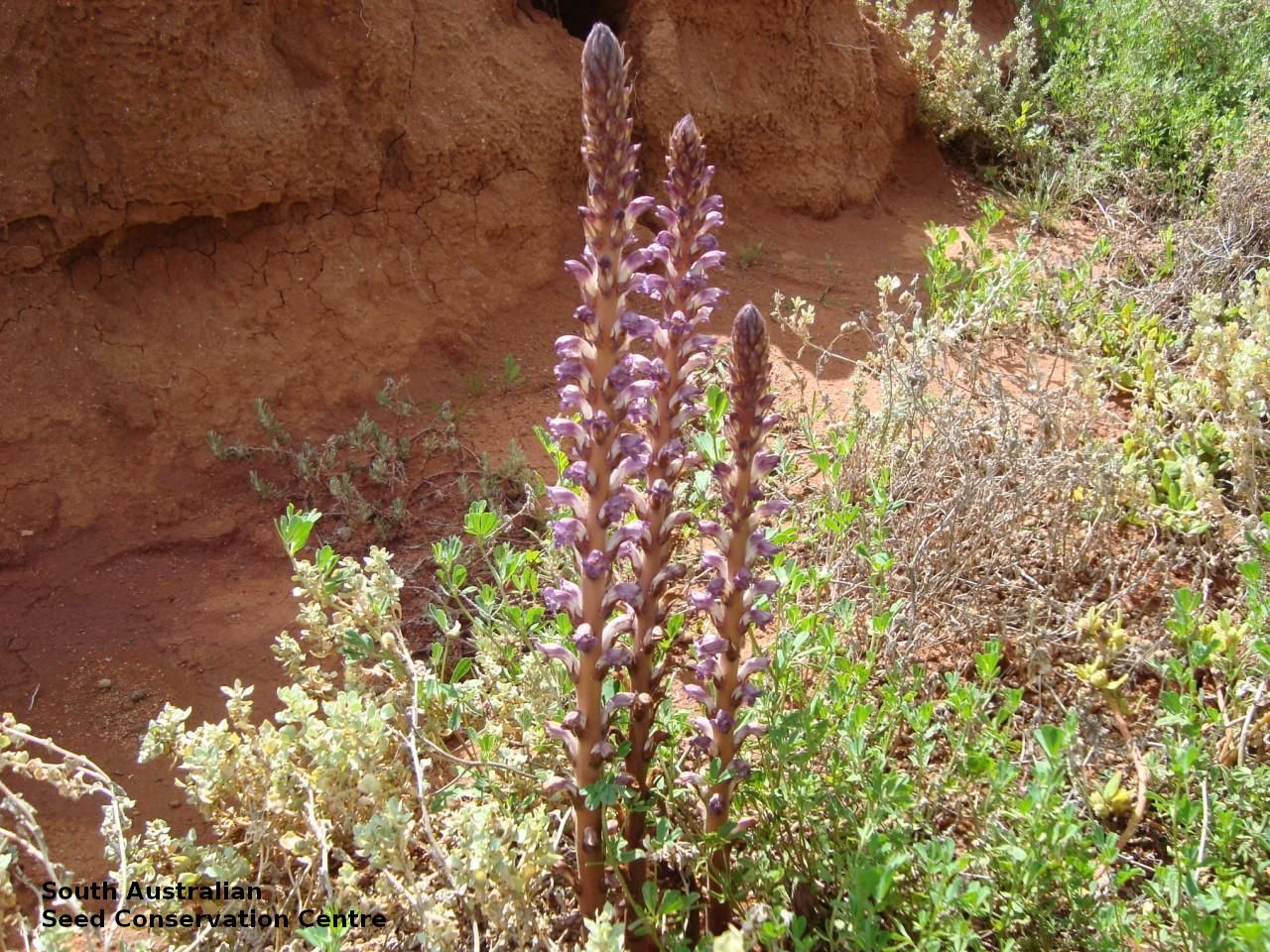
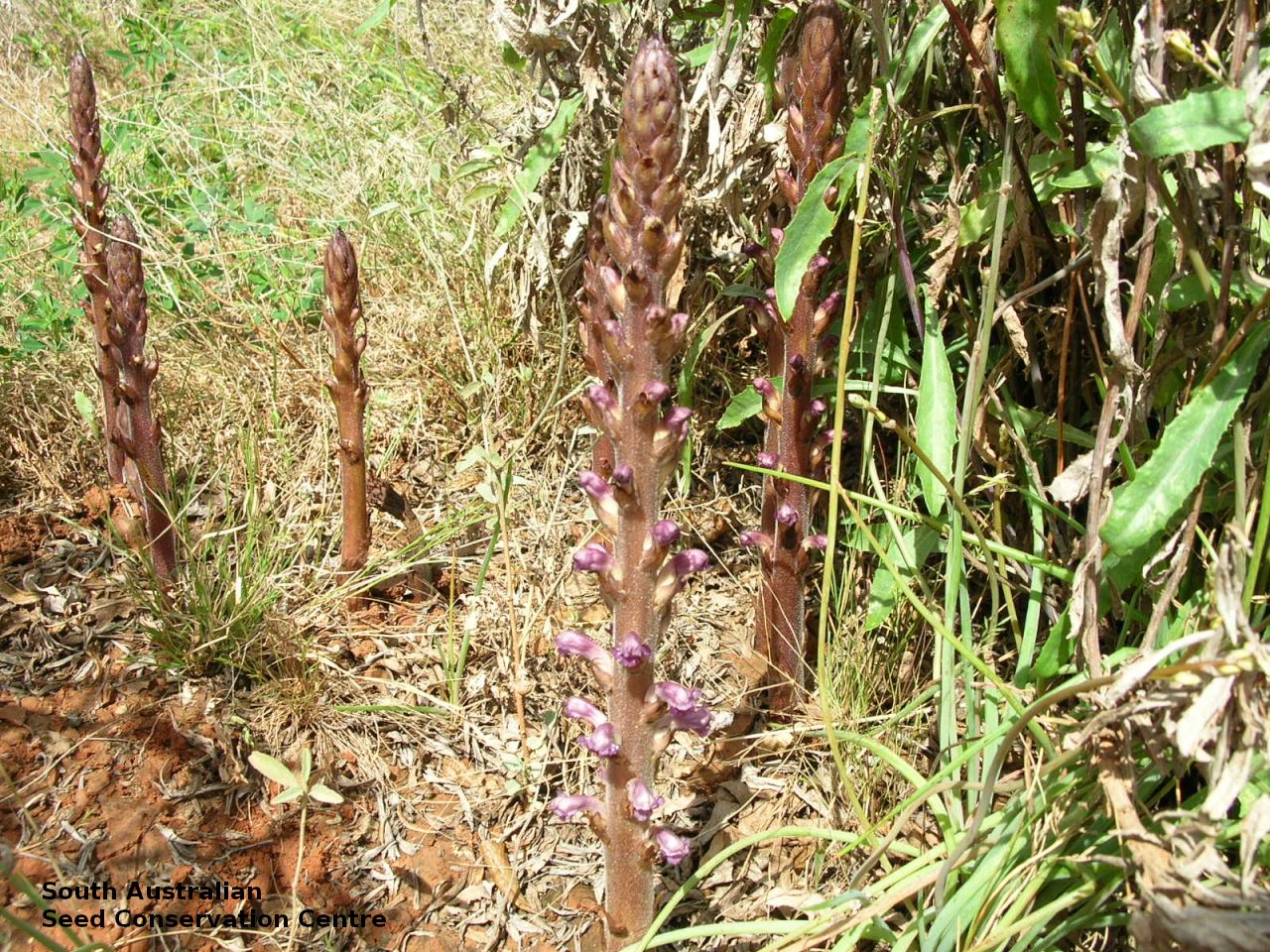
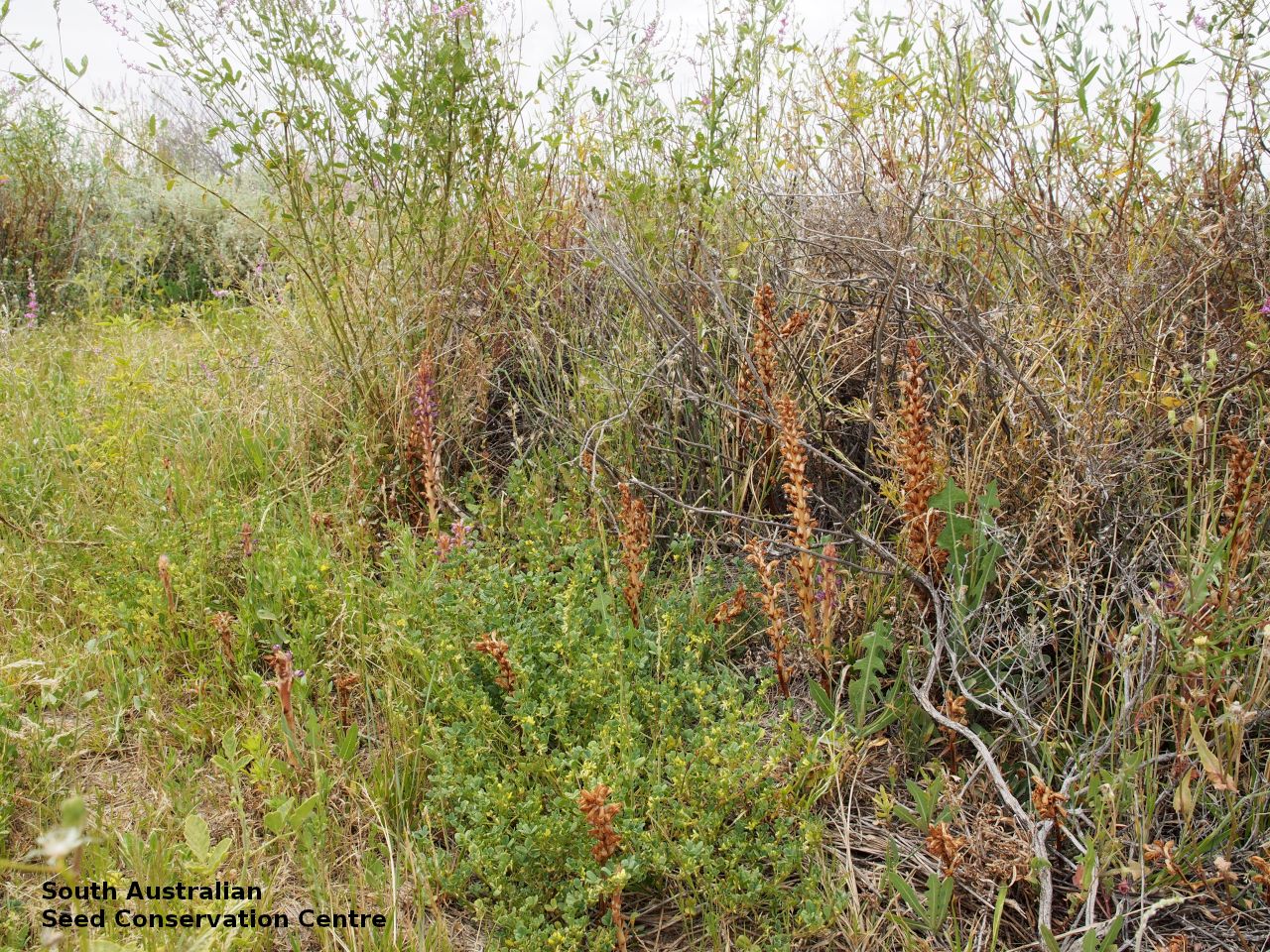
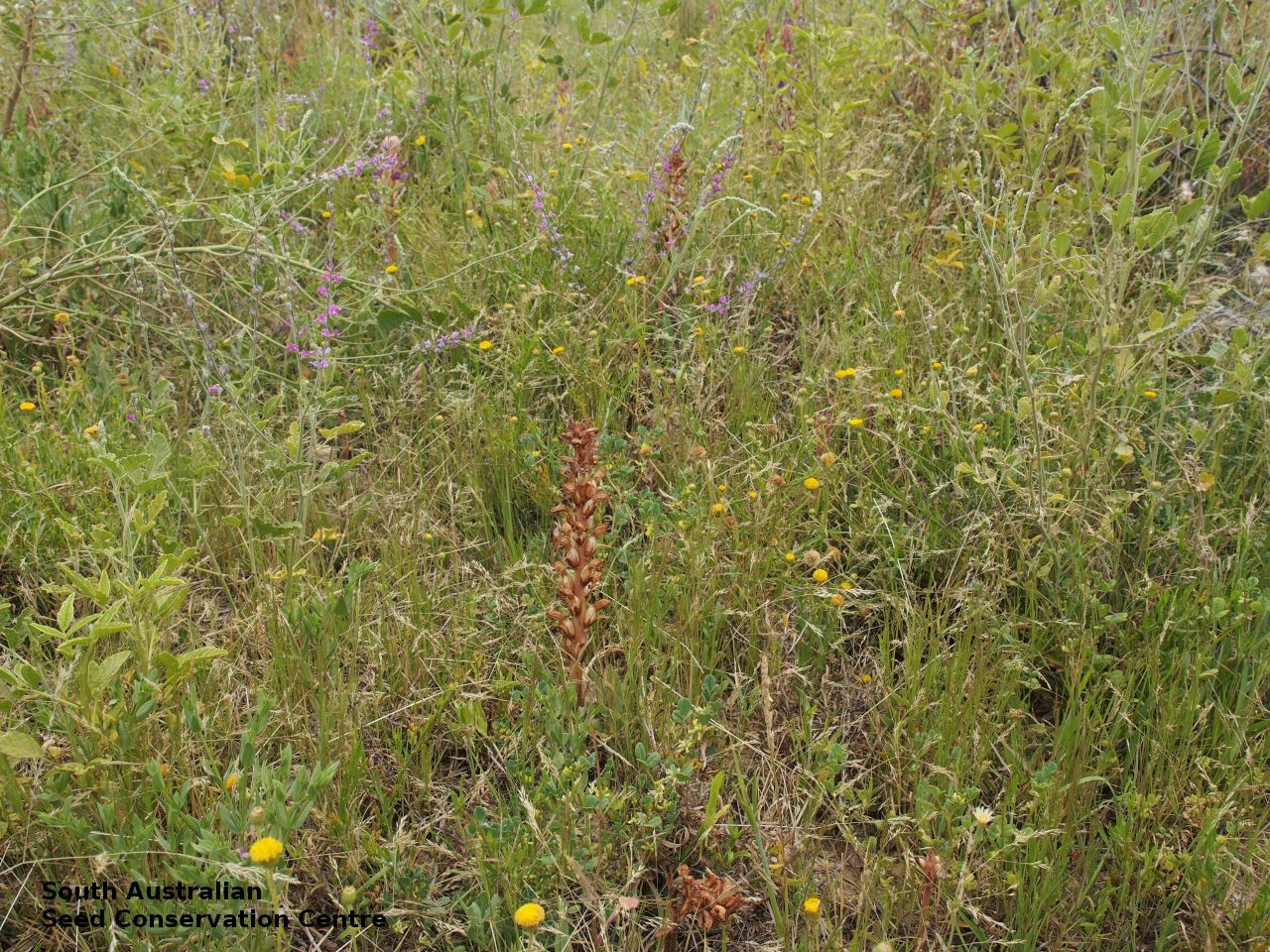
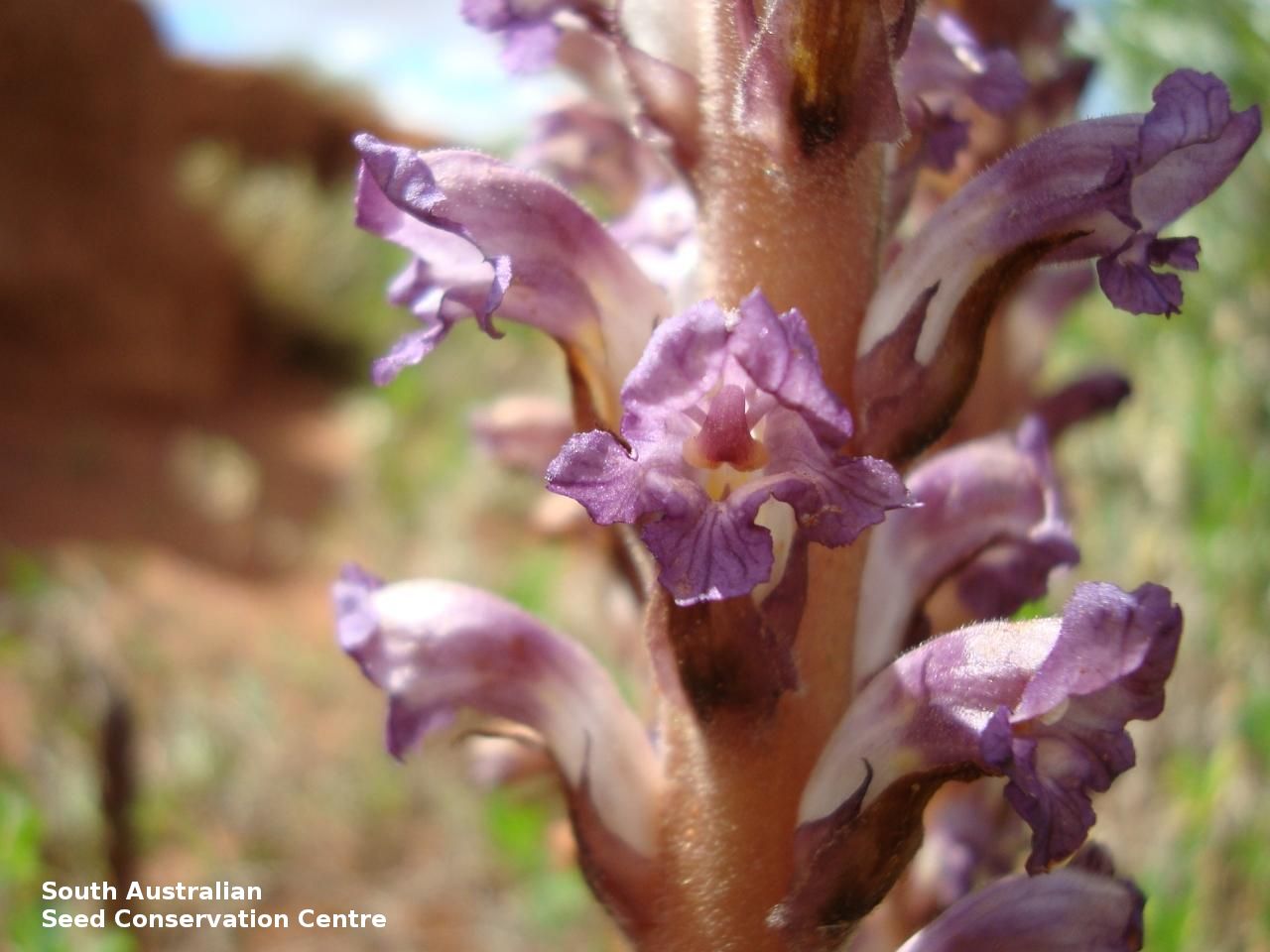
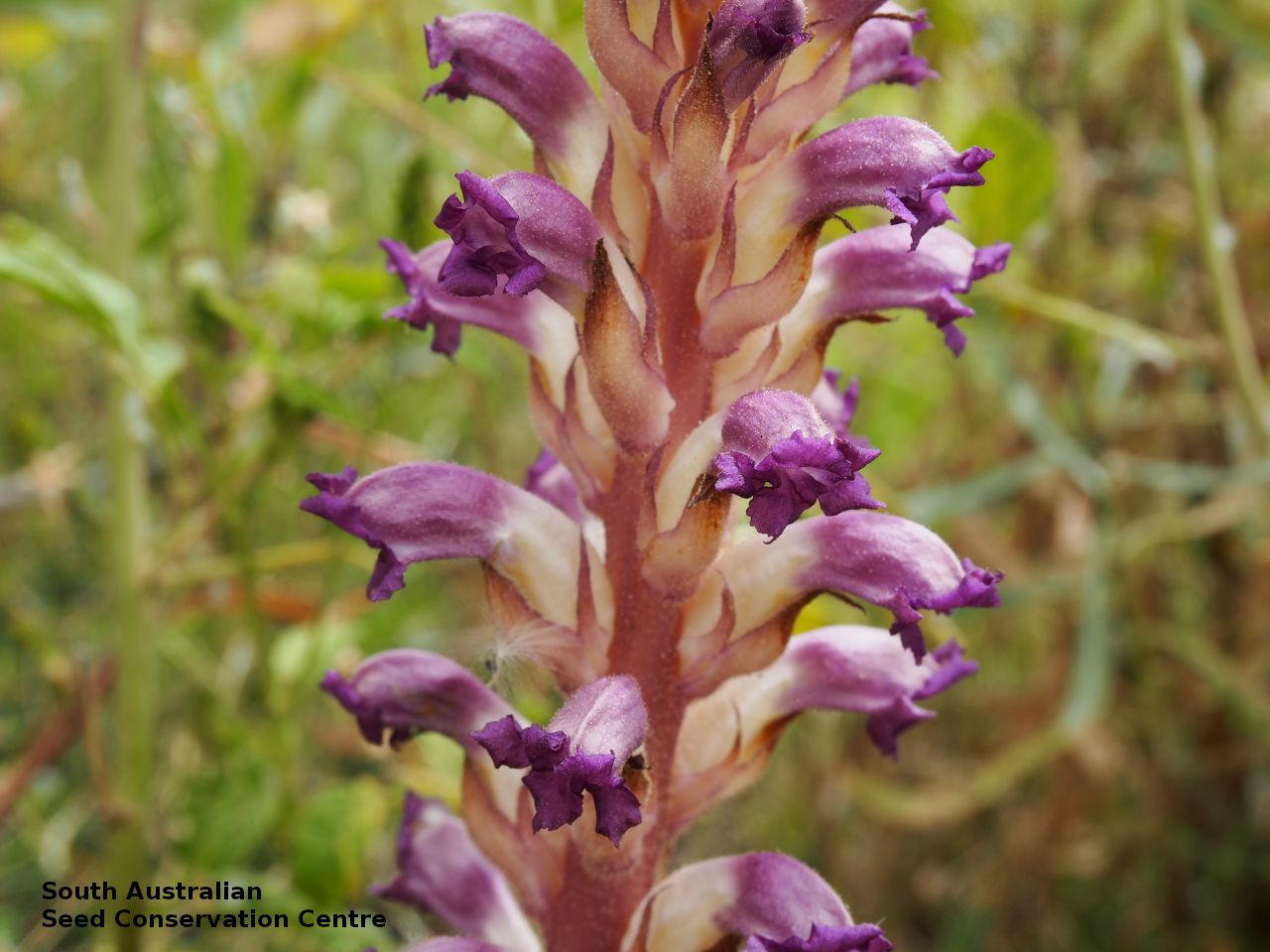
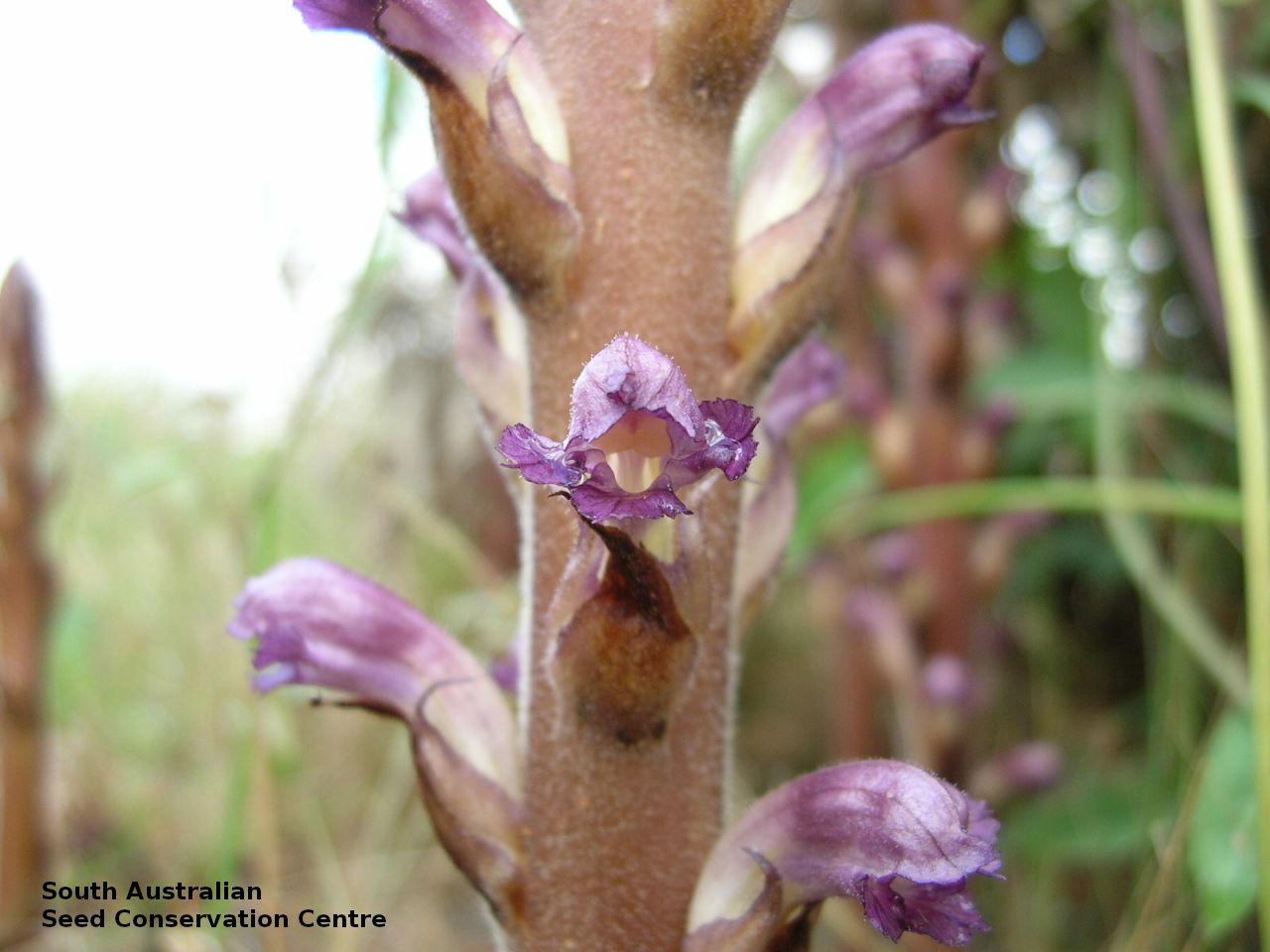
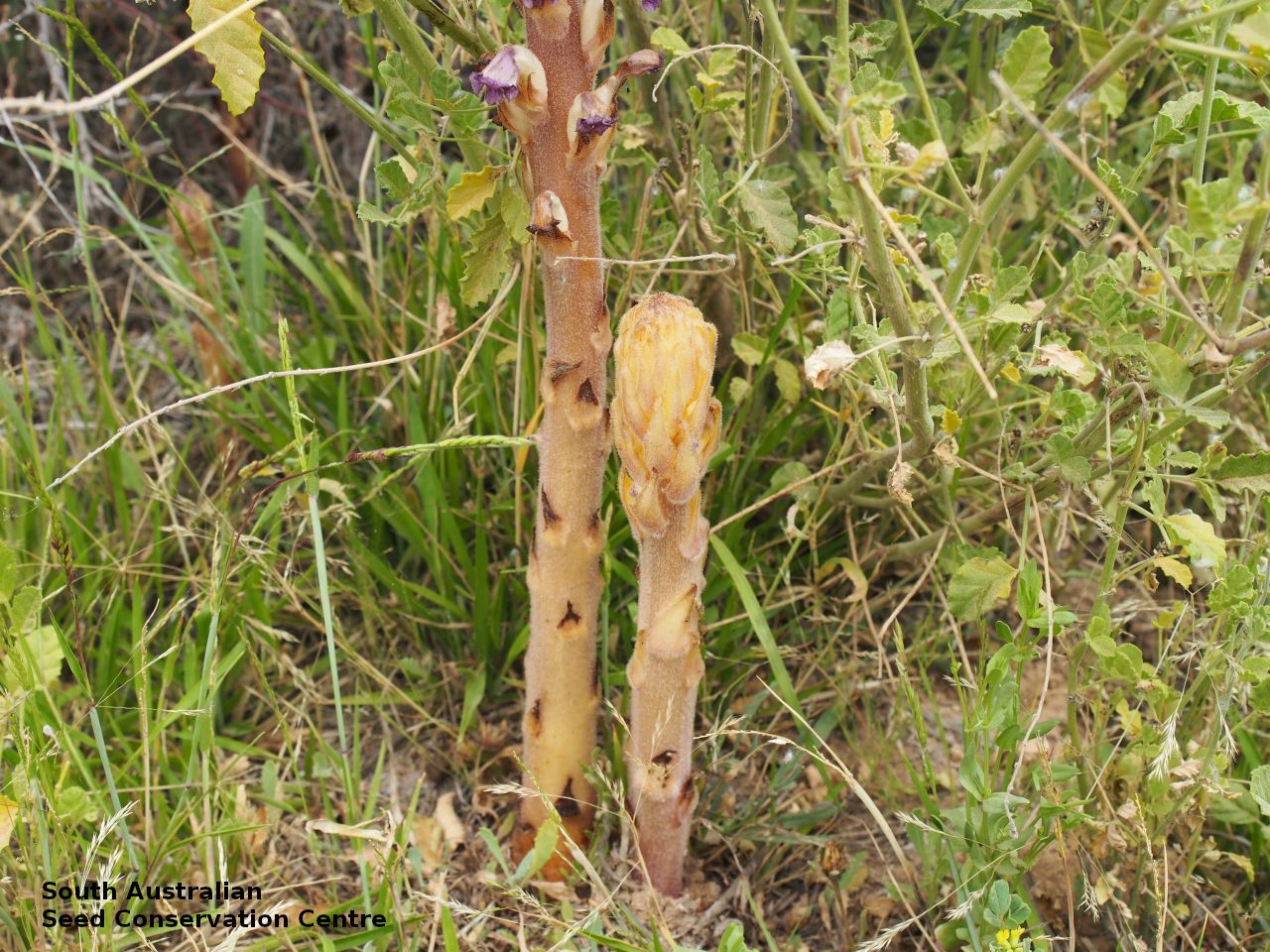
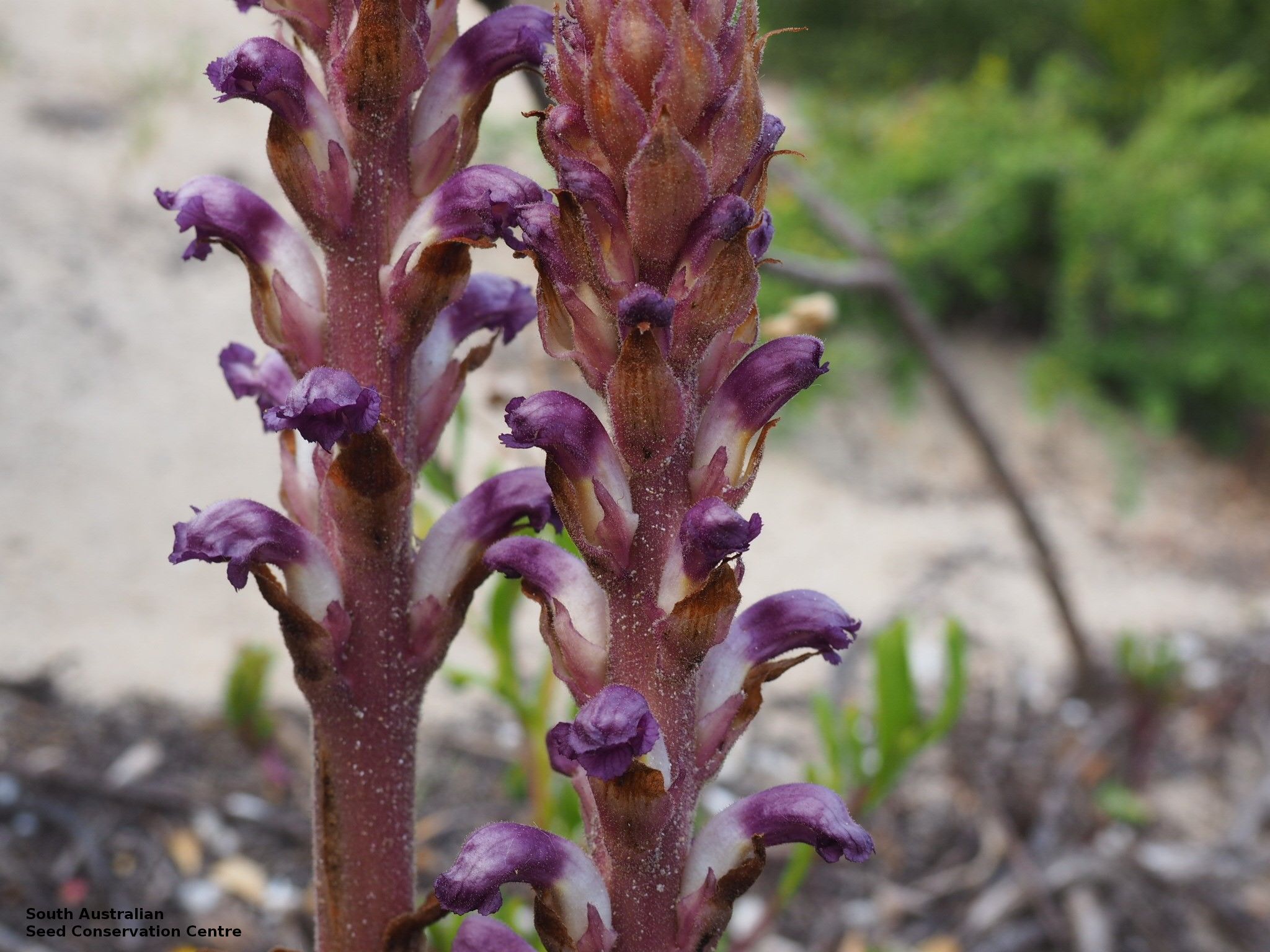
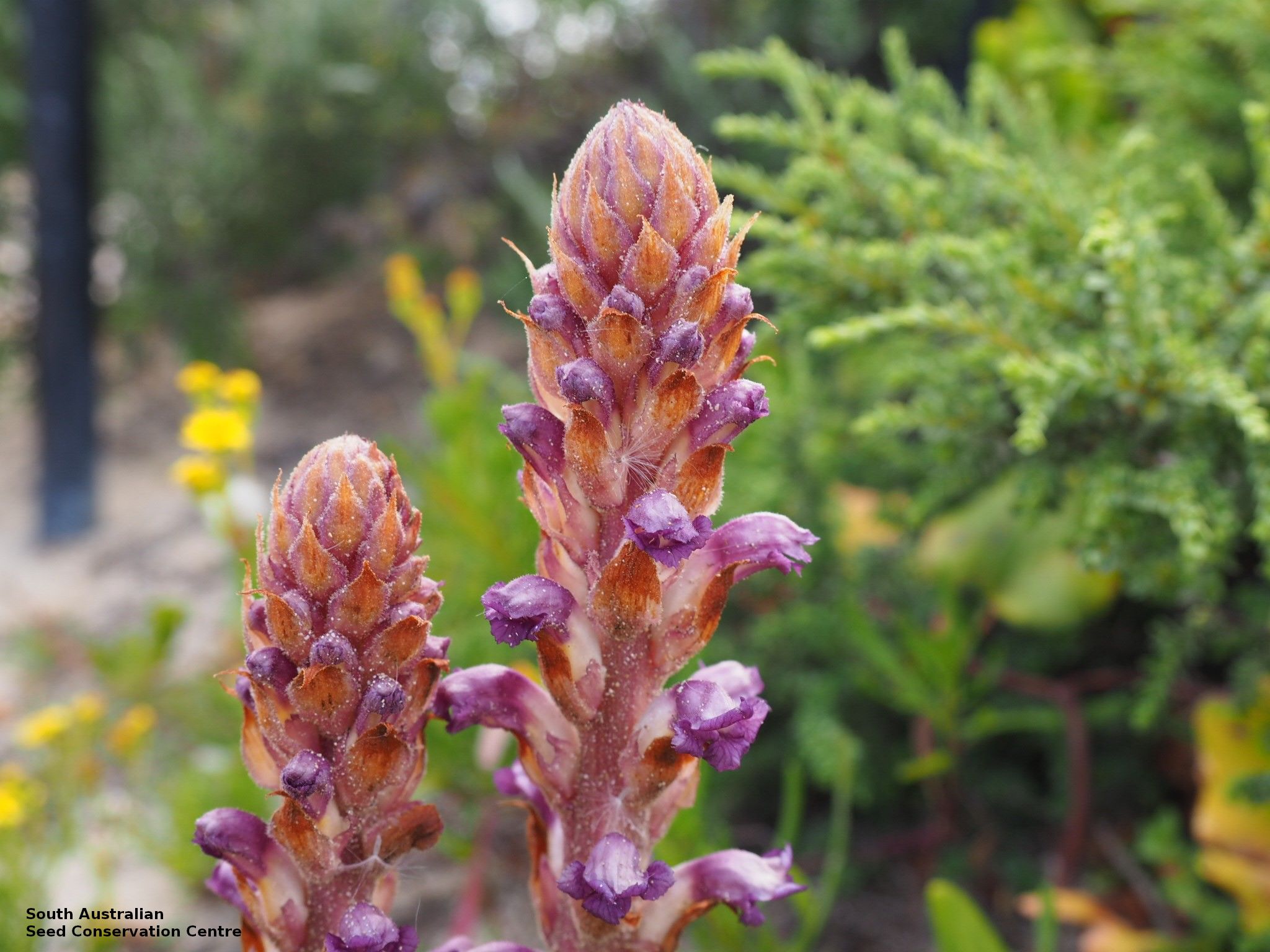
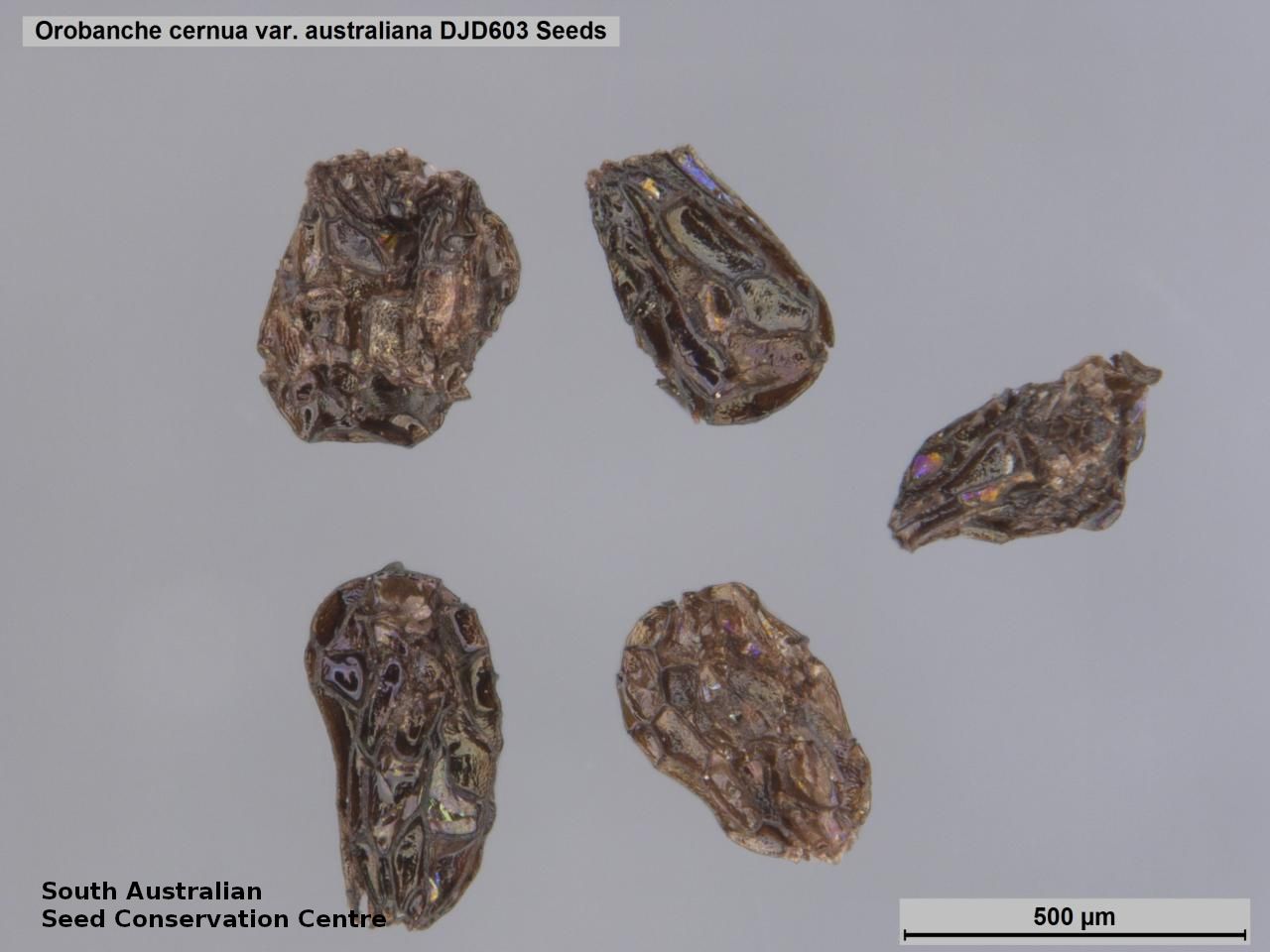
Regional Species Conservation Assessments per IBRA subregion.

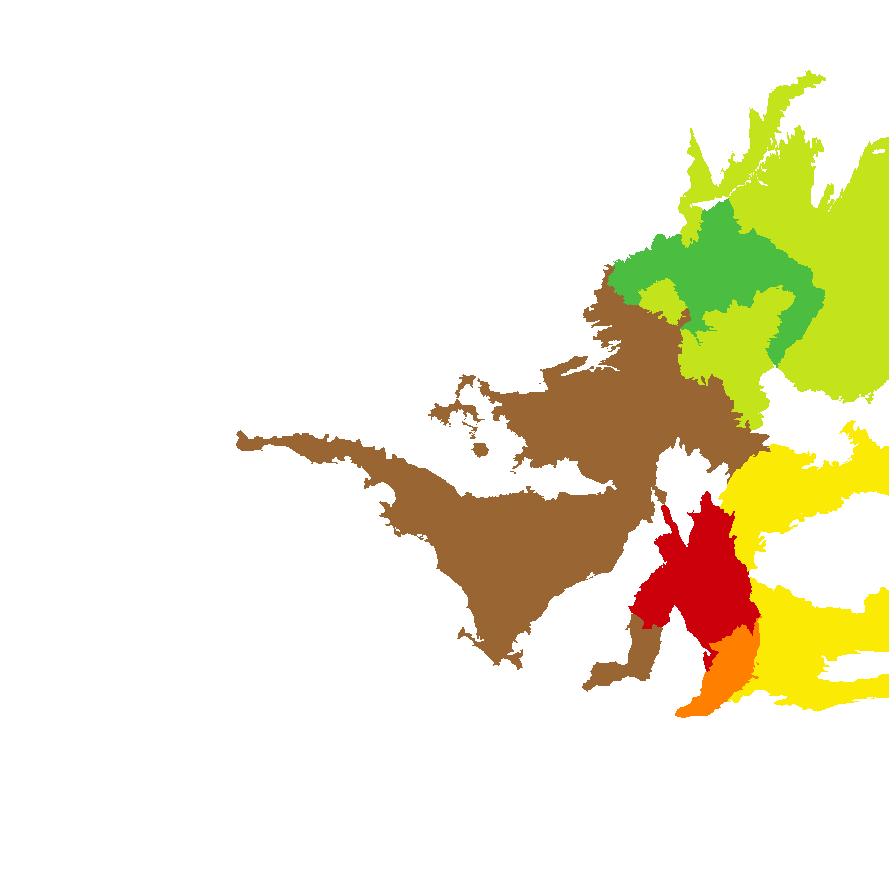
Least concern
Near threatened
Rare
Vulnerable
Endangered
Critically endangered
Extinct
Data deficient
Adelaide
Arkaroola
Ceduna
Coober Pedy
Hawker
Innamincka
Marla
Marree
Mount Gambier
Oodnadatta
Renmark
Wudinna
Keith
Yunta
Display IBRA region text
| Fleurieu (KAN02) | Kanmantoo | Endangered (IUCN: EN B2ab(i,ii,iii)) (Probable Decline) [on coastal dunes; parasitises usually perennial daisies, often Senecios; depends on hosts; Cape Jervis < 15 plants] |
| Mount Lofty Ranges (FLB01) | Flinders Lofty Block | Endangered (IUCN: EN B2ab(i,ii,iii)) (Probable Decline) [on coastal dunes; parasitises usually perennial daisies, often Senecios; depends on hosts; 1 location at Pt Noarlunga] |
| Broughton (FLB02) | | Critically Endangered (IUCN: CR C2a(i)) (Definite Decline) [saltbush plains] |
| Olary Spur (FLB03) | | Vulnerable (IUCN: VU C2a(i)) (Probable Decline) |
| Northern Flinders (FLB05) | | Near Threatened [parasitic sp; in dry sandy creek beds] |
| Central Flinders (FLB06) | | Rare (IUCN: RA d(i,ii)) [parasitic sp; in dry sandy creek beds] |
| Southern Yorke (EYB01) | Eyre Yorke Block | Rare (IUCN: RA d(ii)) [sandy soils, needs host often a daisy, very obvious] |
| St Vincent (EYB02) | | Critically Endangered (IUCN: CR C2a(i)) (Definite Decline) |
| Eyre Hills (EYB03) | | Rare (IUCN: RA d(i,ii)) |
| Talia (EYB04) | | Rare (IUCN: RA d(i,ii)) |
| Eyre Mallee (EYB05) | | Rare (IUCN: RA d(i,ii)) |
| Murray Mallee (MDD02) | Murray Darling Depression | Vulnerable (IUCN: VU D2) [could be eradicated because the weedy spp occurs here] |
| Murray Scroll Belt (RIV06) | Riverina | Vulnerable (IUCN: VU B2ab(i,ii,iii)) (Probable Decline) |
| Myall Plains (GAW01) | Gawler | Rare (IUCN: RA d(i,ii)) |
| Gawler Lakes (GAW03) | | Rare (IUCN: RA d(i,ii)) |
| Arcoona Plateau (GAW04) | | Rare (IUCN: RA d(ii)) |
| Torrens (GAW06) | | Rare (IUCN: RA d(i,ii)) [parasitic sp; in dry sandy creek beds] |
| Barrier Range (BHC01) | Broken Hill Complex | Vulnerable (IUCN: VU C2a(i)) (Probable Decline) |
| Strzelecki Desert (SSD05) | Simpson Strzelecki Dunefields | Near Threatened [parasitic sp; in dry sandy creek beds] |
| Murnpeowie (STP03) | Stony Plains | Least Concern [parasitic sp; in dry sandy creek beds] |
| Fleurieu (KAN02) | Kanmantoo | Endangered (IUCN: EN B2ab(i,ii,iii)) (Probable Decline) [on coastal dunes; parasitises usually perennial daisies, often Senecios; depends on hosts; Cape Jervis < 15 plants] |
| 5 of 6 subregions | Flinders Lofty Block | Near Threatened , Rare , Vulnerable , Endangered , Critically Endangered |
| 5 of 5 subregions | Eyre Yorke Block | Rare , Critically Endangered |
| Murray Mallee (MDD02) | Murray Darling Depression | Vulnerable (IUCN: VU D2) [could be eradicated because the weedy spp occurs here] |
| Murray Scroll Belt (RIV06) | Riverina | Vulnerable (IUCN: VU B2ab(i,ii,iii)) (Probable Decline) |
| 4 of 8 subregions | Gawler | Rare |
| Barrier Range (BHC01) | Broken Hill Complex | Vulnerable (IUCN: VU C2a(i)) (Probable Decline) |
| Strzelecki Desert (SSD05) | Simpson Strzelecki Dunefields | Near Threatened [parasitic sp; in dry sandy creek beds] |
| Murnpeowie (STP03) | Stony Plains | Least Concern [parasitic sp; in dry sandy creek beds] |
Botanical art
Kath Alcock painting: 1
Prior names
Orobanche cernua f. australiana
Orobanche australiana
Common names
Australian broomrape
Etymology
Orobanche, from the Greek 'orobos', meaning vetch and 'ancho', meaning to strangle, referring to the parasitic characteristics of this plant. Cernua, means nodding, possibly referring to the habit of the flower; ascending at first and then decurved. Australiana, from the Latin 'australis', meaning southern, alluding to the variety distribution in the southern part of Australia.
Distribution and status
Found scattered across the eastern half of South Australia growing in sand dunes and sandy creek beds; parasitic on native Senecio species. Also found in New South Wales, Victoria and Tasmania. Native. Rare in South Australia. Rare in the other States.
Herbarium regions: Lake Eyre, Gairdner-Torrens, Flinders Ranges, Eastern, Eyre Peninsula, Murray, Yorke Peninsula, Southern Lofty, Green Adelaide
AVH map: SA distribution map (external link)
Plant description
An erect brown herb to 50cm tall, parasitising on the roots of species of Senecio. The early stage is similar to a young asparagus. Flowers are purple and tubular along the stems, appearing in spring. Fruits are brown papery capsules along the stem, containing numerous fine seeds. Seeds are very fine brown seeds less than 0.5 mm long, with a net-like mesh pattern on the outside.
Seed collection and propagation
Collect seeds between September and December. Carefully break off the stems with the developed capsules, turning brown and place in a paper bag to prevent the seeds falling out. Place the stems in a tray and cover with some paper and leave to dry for at least a week, then shake the stems carefully in a tray to dislodge the fine seeds from the capsules. Store the seeds with a desiccant such as dried silica beads or dry rice, in an air tight container in a cool and dry place. From two collections, the seed viability was high, at 100%.
| Location | No. of seeds
(weight grams) | Number
of plants | Date
collected | Collection number
Collection location | Date
stored | % Viability | Storage
temperature | | BGA | 37,300 (0.46 g) | | 17-Sep-2006 | DEM5391A
Yorke Peninsula | 1-Aug-2007 | 100% | +5°C, -18°C |
BGA
MSB | 200,000 (2.6 g)
200,000 (2.6 g) | 50+ | 18-Nov-2006 | DJD603
Yorke Peninsula | 1-Aug-2007 | 100% | +5°C, -18°C |
| BGA | 880,000 (16.69 g) | 30+ | 21-Oct-2016 | DJD3540
Lake Eyre | 1-Nov-2017 | N/C | -18°C, -80°C |
Location: BGA — the seeds are stored at the Adelaide Botanic Gardens, MSB — the seeds are stored at the Millennium Seed Bank, Kew, England.
Number of plants: This is the number of plants from which the seeds were collected.
Collection location: The Herbarium of South Australia's region name.
% Viability: Percentage of filled healthy seeds determined by a cut test or x-ray.












